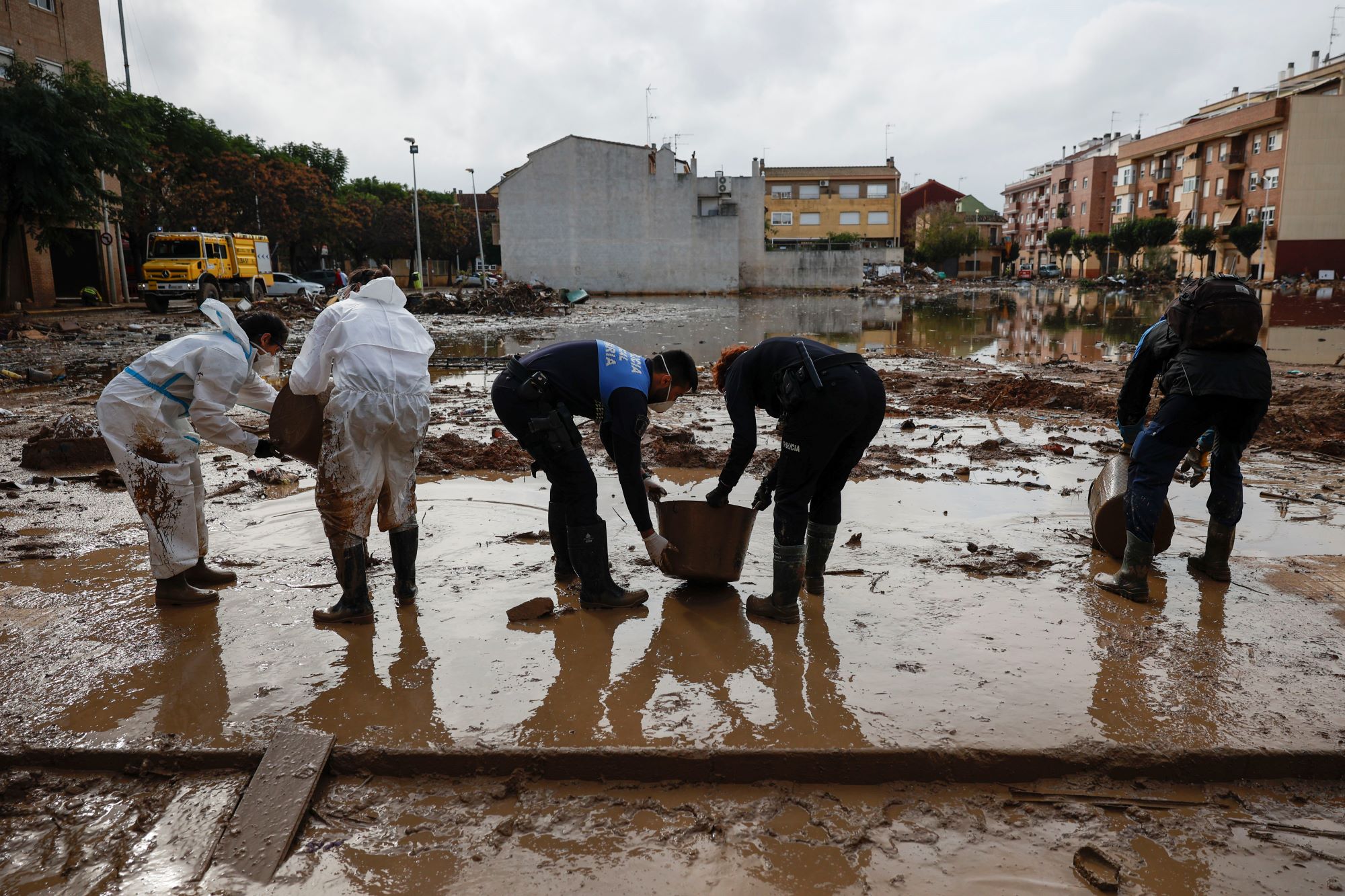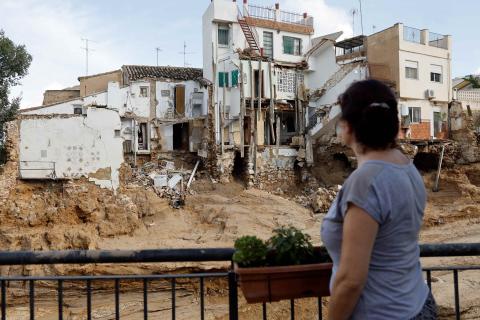This week we are suffering a new DANA that has forced the closure of schools and the declaration of a red alert in several provinces. The event comes at a time when we are still searching for missing people from the previous DANA, which on 29 October devastated the province of Valencia in particular, leaving more than 200 dead and incalculable damage to infrastructures.
‘We have to understand why this DANA has been so exceptional, what the future holds and whether there is an attribution of climate change in these processes,’ said Juan Ballesteros, CSIC researcher at the National Museum of Natural Sciences (MNCN) specialised in hydrological risks in the context of global change, in a briefing organised by SMC Spain.
According to Ballesteros, the high temperature of the Mediterranean Sea, together with the decrease in cold air and the fact that the event moved inland instead of staying in coastal areas, as is usually the case, are three factors that explain its exceptional nature. As for its possible link to climate change, although rapid attribution studies have been published, the scientist maintains that it is a complex phenomenon. ‘Although we have historical records from a statistical point of view, its length is not long enough for us to be able to statistically attribute the impact of climate change to this DANA’, he qualifies.
As to whether we are facing a possible greater recurrence of these events, Ballesteros agrees: ‘The data we have are not sufficiently representative to talk about return periods of 100, 500 or 1,000 years’.
The risks of contaminated water
From Valencia, where she is participating as a CSIC expert in the CECOPI (the Integrated Operational Coordination Centre) meeting, Ana Allende referred to the risks related to water quality and food safety. ‘It is a fairly intensive cultivation area and special attention must be paid to the microbiological and chemical quality of irrigation water, but also to which cultivation areas have been flooded or partially flooded,’ explained the CSIC research professor.
For this reason, vegetables that have come into contact with potentially contaminated water should be destroyed. ‘They should not be put on the market. We do have crops that are more aerial in areas affected by flooding, such as woody trees and fruit trees. In that case, we would have to assess what would be the potential risks of being able to harvest those fruits or vegetables,’ she said.
Maintaining the bottled water recommendation I believe is a very effective preventive measure
Ana Allende
In the case of the water reaching homes in the affected areas, although many have already recovered it, the health authorities do not recommend its use either for drinking or cooking because the distribution pipes may be contaminated. ‘It's going to take some time for them to check everything, so keeping the recommendation of bottled water I think is a very effective preventive measure,’ she said.
Crisis of confidence in the institutions
The devastation in so many municipalities, the high number of deaths and the link between this DANA and climate change have triggered the proliferation of hoaxes and conspiracy theories. ‘During the days following the catastrophic WLD, far from experiencing an educational shock that would have placed climate change at the centre of the debate, what we witnessed was the birth of conspiracy denialism in Spain, which was a fairly residual phenomenon in our country’, said Emilio Santiago, a senior scientist at the Institute of Language, Literature and Anthropology of the CSIC, an expert in climate anthropology.
We are witnessing the birth of conspiracy denialism in Spain, which was a fairly residual phenomenon in our country
Emilio Santiago
Added to this, according to the researcher, is the current crisis of confidence that affects all democratic institutions, from science to journalism, and which has its origins in the economic crisis of 2008, which led to a crisis of representativeness that affected institutional politics.
‘When certain actors promote distrust towards institutions, towards the public and towards science, and become focal points for the climate hoaxes that we have been seeing circulating these days, this has an impact,’ said Santiago. ‘It is important to start talking about climate change as a national security problem,’ he added.
Building a culture of emergencies
As for how to deal with new events of this type, the three experts agreed on the importance of implementing adaptation measures, without losing focus on mitigation, i.e. reducing emissions from fossil fuels to try to contain the increase in global temperature.
‘We need to improve the connectivity of flows with flood plains, give space to rivers so that they can flood without affecting areas and laminate floods, which can be done with vegetation,’ Ballesteros said, stressing that there is no such thing as zero risk.
What happens to homes built in flood zones? “There is no society that can administratively, politically and economically manage to move that volume of population. That is not realistic,” Santiago stressed. In his opinion, the realistic thing is to have a culture of emergency that minimizes human and material damage when this happens.
In torrential watersheds the response time can be hours, an hour or even minutes
Juan Ballesteros
Regarding the warning system, Ballesteros affirmed the importance of improving them, but knowing very well what we want to warn about and where, bearing in mind that the response time can be very short. ‘In torrential watersheds, the response time can be hours, an hour or even minutes,’ he said.
To conclude, Allende stressed the importance of having an impact from the educational stages to raise awareness and be prepared for this type of situation: ‘At school, at a very early age, basic knowledge can be taught, for example, hygiene and food safety, which can be well internalised so that it can be applied in any situation’.




